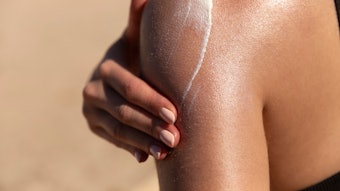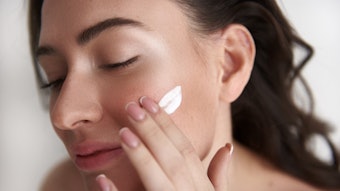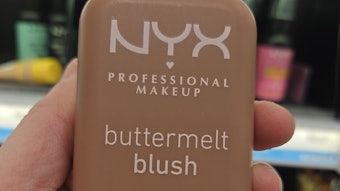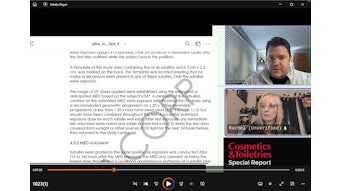
Fragrance is a significant part of personal care products such as creams, lotions, body powders and shaving creams. It is formulated into nearly every personal care product via either a single raw material or a blend of two or three materials. Fragrance also plays a minor role in other cosmetics such as depilatories and hair-waving lotions, where it primarily masks malodorous ingredients. Fragrances are volatile; they react with other components and are susceptible to heat, moisture and various other factors. Therefore, it is important to control the release of fragrance raw materials over a desired site and at a desired rate.
Log in to view the full article
Fragrance is a significant part of personal care products such as creams, lotions, body powders and shaving creams. It is formulated into nearly every personal care product via either a single raw material or a blend of two or three materials. Fragrance also plays a minor role in other cosmetics such as depilatories and hair-waving lotions, where it primarily masks malodorous ingredients. Fragrances are volatile; they react with other components and are susceptible to heat, moisture and various other factors. Therefore, it is important to control the release of fragrance raw materials over a desired site and at a desired rate.
Before a fragrance is incorporated into a cosmetic preparation, it is blended by a perfumer who mixes a variety of natural and synthetic raw materials to create a perfume compound with a multitude of chemical functional groups such as alcohols, aldehydes, ketones, esters, lactones, ethers and nitriles. In some cases, natural ingredients are less potent than their synthetic counterparts but on the other hand, only low levels of synthetic ingredients are permitted. In either case, it may be difficult to achieve the desired fragrance in a final product without adding high levels of ingredients.
To increase the efficacy of fragrance raw materials, controlled release may be used. This novel technology improves the performance of natural ingredients, thereby offering a viable alternative to less accepted synthetic ingredients.
Types of Controlled Release
The way in which a consumer perceives a fragrance depends upon its composition and release characteristics. Controlled release is a process whereby one or more active agents or ingredients are made available at a desired site and time, and at a specific rate.1 With the emergence of controlled- release technologies, heat-sensitive, temperature-sensitive or pH-sensitive ingredients can be used conveniently in many systems since the active ingredient is released under the influence of a specific stimulus at a specified stage.
Controlled release is defined as a modification of the rate or place at which an active substance is released. This modification can be made using materials with specific barrier properties for manipulating the release of an active and to provide unique sensory and/or functional benefits.2 Different types of controlled-release systems have been designed to overcome various challenges and to provide a wide range of release options. For example, current research interest in the flavors and fragrance industry is focused on the design of selective and efficient delivery systems with two goals: to control the slow release of highly volatile odorants in functional perfumery products, and to increase the stability of fragrance from materials with unstable chemical functional groups such as aldehydes.
The three principal modes of controlled release are delayed, sustained and burst release. Delayed release is a mechanism whereby the release of an active substance is delayed from a finite lag time up to a point when/where its release is favored and is no longer hindered. Sustained release is a mechanism designed to maintain a constant concentration of an active at its target site. Burst release is simply the high initial delivery of an entrapped active before the release reaches a stable profile, thus reducing the system’s effective lifetime and complicating the release control when sustained release is required. Burst release may be preferred for high impact fragrance applications such as aerosols, shampoos, air fresheners and sprays.
Encapsulation
Controlled-release systems may be designed to change the composition of the fragrance mixture being released to compensate for the differential rates of loss of the original ingredient components. Controlled-release methods can include: nanoparticles, encapsulation, nanosuspension, microemulsions and solubilization using surfactant systems. The most common form of controlled release in many industries is encapsulation, where active molecules are surrounded with a layer of material that prevents their release and the penetration of environmental factors until desired. Encapsulation and other controlled-release technologies have enjoyed their fastest growth since the 1990s. Although encapsulation was mostly developed for use in drug delivery systems, it has also revolutionized the food and fragrance industries.3
As noted, encapsulation is an elegant way to improve the performance of a fragrance, such as its substantivity, tenacity or endurance. Totally enveloping an active material in a coating or capsule thereby confers distinct physicochemical capabilities to the material that are different than the original nonencapsulated ingredient. The physico-chemical parameters depend upon the type of wall material used as well as the formulation to which the microcapsules are incorporated. For example, alginate beads require an alkaline pH for their solubility and release thereafter. A wide range of cores (encapsulants), wall-forming materials (encapsulating agents) and technologies for controlling the interactions of ingredients in a given system, and for manufacturing capsules or particles of different sizes, shapes and morphological properties are commercially available.
The shape and size of the capsule depends upon the shape and size of the core material. Ingredients that may benefit from encapsulation include: flavors, fragrances, acids, alkalis, buffers, lipids, enzymes, microorganisms, artificial sweeteners, vitamins, minerals, preservatives, antioxidants, cross-linking agents, leavening agents, colorants and nutrients. As noted, the various properties of these materials can be changed/modified using encapsulation. For example, handling and flow properties can be improved by converting a liquid to a solid encapsulated form (flavors and fragrances); hygroscopic materials can be protected from moisture (artificial sweeteners); and the stability of functional ingredients—i.e. antioxidants, nutrients and bioactive enzymes that are volatile or sensitive to heat, light or oxidation (lipids)—can be protected, thereby extending their shelf life (essential oils and oleoresins). In addition, materials that are otherwise incompatible can be mixed and utilized together safely, i.e. cross-linking agents and encapsulated acids/alkalis, to reduce hygroscopicity and dusting and provide a high degree of flowability without clumping.
The most commonly used wall materials are polysaccharides and sugars, proteins, lipids, inorganics and synthetics due to availability, low cost, non-reactivity, solubility, ease of handling and protecting ability.4 Generally, water-soluble polymers are used to encapsulate organic core materials and water-insoluble polymers are used to encapsulate aqueous core materials. The wall material determines the release of the actives, and this wall material should retain the core material and be compatible with it as well as in the formulation where it is added.
The process for encapsulating sensitive compounds consists of two steps. First, a core material is emulsified with a dense solution of wall material, then the emulsions are dried or cooled. The choice of appropriate encapsulation technique depends upon the end use of the product and processing conditions involved in the manufacturing process (see Table 1). Major encapsulation methods include coacervation, co-crystallization, molecular inclusion and adsorption, as are described below.
Encapsulation Methods
Coacervation: Coacervation is a phenomenon occurring in colloidal solutions, and it is often regarded as the original method of encapsulation.5 Coacervative encapsulation is a three-part process: particle or droplet formation, coacervative wall formation and capsule isolation. Coacervation can be simple or complex and it may be initiated in a number of different ways, including changing the temperature or pH, or adding a second substance such as a concentrated aqueous ionic salt solution or a non-solvent.
Simple coacervation involves only one type of polymer with the addition of strongly hydrophilic agents to the colloidal solution. Simple coacervation is based on salting out one of the polymers by adding agents such as salts or alcohols that have higher affinity to water than the polymer. This essentially is a dehydration process, where a separation of the liquid phase results in the solid particles or oil droplets becoming coated and eventually hardening into microcapsules.2
Complex coacervation uses two or more types of polymers, and it is a process whereby a polyelectrolyte complex is formed. It requires the mixing of two colloids at a pH where one is negatively charged and the other is positively charged, leading to phase separation and the formation of enclosed solid particles or liquid droplets.6 The release of actives from coacervated systems is primarily a function of the wall type and its thickness—i.e., a slower release occurs with increased wall thickness.
Co-crystallization: Co-crystallization is an application process that uses sucrose as a matrix for the incorporation of core materials. It involves spontaneous crystallization, which produces aggregates of micro- or fondant-size crystals ranging from 3 μm to 30 μm, while entrapping non-sucrose materials within or between sucrose crystals.7 Spontaneous crystallization of supersaturated sucrose syrup is achieved at high temperature (above 120°C) and low moisture (95–97° Brix [Bx]). Brix is the measure of the sugar content of the solutions, where 1° Bx represents 1 g sucrose in 100 g solution. This measurement gives the strength of the solution as a percentage by weight (% w/w).
Aroma compounds can be added at the time of spontaneous crystallization.8 The sugars form an oxygen barrier, thereby extending the shelf life of aroma chemicals. Controlled release of core material occurs from the sugary matrix. The granular product has a low hygroscopicity and good flow ability and dispersion properties.9 Release of actives from amorphous carbohydrate matrices takes place by subjecting the matrix to moisture or high temperatures. The advantage of this process is that the procedure is simple and inexpensive since relatively cheaper encapsulation matrices such as sucrose can be used.
Molecular inclusion: As the name implies, inclusion in cyclodextrins is the only method of encapsulation that takes place on a molecular level. This process utilizes ß-cyclodextrin as the encapsulating medium.5 Cyclodextrins are enzymatically modified starch molecules that can be made when cyclodextrin glucosyltransferase acts on starch. After cleavage of starch by the enzyme, the ends are joined to form a circular molecule with a (1-4) linkage.10 Cyclodextrins are used to increase the solubility and reduce the volatility of aroma compounds. In addition, they are used to protect heat-, light- or oxygen-sensitive materials. The inclusion complexes are defined as the result of interactions between compounds in which a smaller guest molecule fits into and is surrounded by the lattice of the other.11 The type and degree of complexation in cyclodextrins are determined by two main factors: steric fit of the guest (encapsulant) to the host (cyclodextrin) and their thermodynamic interactions, mainly hydrophobic. A wide variety of molecules can be entrapped in cyclodextrins including fats, flavors, fragrances and colors, among others. Release of the complexed guest takes place by immersing the guest-host complex in an aqueous media to dissolve the complex and further promote the release of the guest when displaced by water molecules.2
Adsorption: Physical adsorption is only feasible when an active is adsorbed onto a large surface area, microporous substrate—commonly referred to as a molecular sieve. It includes basic blending, solvent evaporation and molecular complexation based on charged differentials. The internal phase can be either hydrophobic or hydrophilic, although the choice of substrate determines the feasibility. Examples of adsorbing agents used to adsorb the internal phase include activated carbon, amorphous silica, cellulose, nylons, cyclodextrin and some natural clay. These systems also produce materials that can be used in combination with other encapsulation systems, where the loaded substrate can be overcoated to further protect the internal phase.
The effectiveness of these wall materials is demonstrated by an extensive reduction in equilibrium vapor pressure, which accompanies the physical adsorption of volatile flavors and fragrances. Dipping capillary-sized droplets of sucrose or lactose solution into liquid nitrogen followed by freeze-drying can produce amorphous spheres that have the ability to adsorb aromas.
Controlled-release Mechanisms
Despite the numerous applications of encapsulation in many industries, predicting the release of encapsulated actives remains a challenge. The well-controlled release of a core material is an important property of encapsulates, and the release of an active may be based on one or a combination of release mechanisms. These can be time-specific, site-specific, rate-specific and/or stimulus-specific; therefore, when designing a customized encapsulated ingredient, one must determine the desired release mechanism.
The release of the core from an encapsulated material can be controlled through prolonged release, started release or a combination of the two. In prolonged release, the core is released during an extended period of time, whereas started release is initiated by pH, heat, moisture, mechanical pressure, etc. The release mechanisms needed for different encapsulation methods are shown in Table 1, and the following release mechanisms are organized by their mode of action.
In encapsulated release, the encapsulation structure must be breached to release the fragrance volatile. For the release, only the chemical bond in a fragrance precursor need be broken. That precursor, called profragrance or a pro-perfume, is usually a non-volatile and odorless molecule designed with a covalent bond that can be selectively cleaved in a chemical reaction, thus releasing one or several volatile compounds. The release of a profragrance organic volatile molecule is shown in Figure 1. Once released, the fragrance has its original characteristics.
Only a limited number of reaction conditions, such as hydrolysis, temperature changes, light activation and exposure to oxygen, enzymes or microorganisms, can be used to liberate the different chemical functionalities. Encapsulation and controlled-release systems can be designed to respond to one or a combination of these triggers to activate the release of the entrapped substance to meet a desired release target or rate. Some prominent triggers include: temperature (fat/wax matrices); moisture (hydrophilic matrices); pH (enteric coating, emulsion coalescence and others); enzymes (enteric coating as well as a variety of lipid, starch and protein matrices); shear (chewing, physical fracture and grinding); and lower critical solution temperature (LCST) of hydro gels.
In matrix systems encapsulating volatile compounds, release depends upon several mutually dependent processes, such as: diffusion of the volatile compound through the matrix, the type and geometry of the particle, transfer from the matrix to the environment, and the degradation/dissolution of the matrix material.1 De Roos showed that two factors control the rate of release from products—the comparative volatility of the aroma compounds in the matrix and air phases under equilibrium conditions (thermodynamic factor), and the resistance to mass transport from product to air (kinetic factor). The mechanism of release for the capsule may be based on solvent effects, such as melting, diffusion, degradation or particle fracture.12 The mechanisms of controlled release in the delivery systems of various consumer products are described below.
Prolonged/Started-release Mechanisms
Diffusion controlled release: Diffusion is the dominant mechanism in controlled release from encapsulation matrices.13 The vapor pressure of a volatile substance on each side of the matrix is the major force influencing diffusion.14 One of the essential requirements for predicting release mechanisms is by identifying parameters involved in mass transport and diffusion of the actives from a region of high concentration (dosage) to a region of low concentration in the surrounding environment. Diffusion controlled release systems can be classified into two main types: reservoir and matrix systems, in addition to barrier controlled release and, in some cases, combinations of all three.
Diffusion controlled reservoir systems are simply described as delivery devices where an inert membrane surrounds an active agent. Upon activation, the active diffuses through the membrane at a finite, controllable rate. The principal steps in the release of an active ingredient from a reservoir system are: diffusion of the active agent within the reservoir, dissolution or partitioning of the active agent between the reservoir carrier fluid and the barrier, diffusion through the barrier, and partitioning between the barrier and the elution medium.1 Diffusion controlled reservoir systems are more efficient than most other controlled-release systems.
In matrix systems, the active agent is homogeneously dissolved or dispersed throughout the polymer mass. The principal steps involved in the release of the active agent from a matrix system depend upon whether the active agent is dissolved or dispersed in the matrix. The steps involved in the release of an active agent dissolved in the matrix are: diffusion of the active agent to the surface of the matrix, partitioning of the active agent between the matrix and the elution medium, and transport away from the matrix surface. Matrix systems can be swellable (hydrogel) or non-swellable. Compared to reservoir systems, matrix systems require less quality control, hence lower manufacturing costs.
Barrier controlled release depends upon: the concentration difference across the wall of the microcapsules, wall thickness, permeability through the wall, and the diffusion coefficient of the active ingredient in the surrounding environment. The release of the active in barrier controlled release uses the principle of diffusion release, so barrier controlled release is considered an ancillary type of diffusion.
Osmotic controlled release: Osmotic controlled delivery systems utilize the principles of osmotic pressure to drive the controlled delivery of active agents. The active agent (core) is enclosed in a selectively water-permeable polymeric membrane with a small orifice; this membrane is impermeable to the active agent. In an aqueous environment, water permeates through the membrane into the core. If the active agent has high solubility in water, a large osmotic pressure is created inside the capsule. The active agent is then released when the osmotic pressure exceeds the maximum force that the walls of the capsule can tolerate.15, 16
When osmotic pressure exceeds the surrounding pressure, capsules swell until the membrane or some other part of the enclosure wall reaches the point of ultimate elongation and a portion of the wall yields and ruptures, releasing the contents of the enclosure to the environment. Osmotic fragrance delivery systems have been developed that release the active core either in a sustained manner or via osmotic bursting. These delivery systems rely upon semipermeable coatings to control the influx of the water and to control the active core within the matrix.
Swelling controlled release: In swelling controlled systems, the active agent dissolved or dispersed in a polymeric matrix is unable to diffuse to any significant extent within the matrix. When the polymer matrix is placed in a thermodynamically compatible medium, the polymer swells due to the absorption of fluid (penetrant) from the medium. The active agent in the swollen part of the matrix then diffuses out.16 While in diffusion-controlled systems the barrier or matrix is assumed to be unaffected during the release process, in swelling-controlled systems, the membrane undergoes a transition from a glassy to a gel state upon interaction with the penetrant. The polymer chains in the gel state, being more mobile than those in the glassy state, allow the active agent to diffuse out of the matrix more rapidly. The release rate is determined by the glass-to-gel transition process.
Adjacent to the solvent surface is the completely swollen gel, and next to the swollen gel is a thin swelling zone where the polymer chains are relaxing. Finally, there is a layer of unswollen, completely dehydrated rigid polymer matrix in the glassy state. The swelling zone moves into the membrane at a uniform rate, and solvent gain in the polymer increases with time. The rate of relaxation of the polymer chains from the glassy state to the gel state is the slowest step in the sorption process.1
Solvent-activated controlled release: Since most encapsulating matrices are water-soluble, the water in the cosmetic product dissolves away the capsule, thereby liberating its contents into the product; or it causes the capsule to swell to either begin or enhance the release of the core material. However, water-insoluble coatings can also be dissolved by selecting an appropriate solvent. The release may be a sudden burst or a continued or delayed delivery. This is regulated by controlling the rate of wall solubility, the swelling of the wall material, pH effects or changes in the ionic strength of the surrounding medium.
Although most traditional wall materials will rapidly release the core material once they are rehydrated, capsule matrices may be modified to release the active material at a desired point in time. Osmotically controlled release is similar to solvent-activated release in that the core of the particle adsorbs a solvent in time and swells until the capsule bursts.17 Solvent-activated release is the most common controlled-release mechanism used in the foods industry.18 The active ingredient is released when the food material comes into contact with a solvent, resulting in swelling of the capsule. This is analogous to a swelling-controlled system.
Moisture-triggered controlled release: Moisture-triggered controlled release is the simplest and most commonly used method for flavors and fragrances. A selected fragrance is encapsulated in a water-sensitive matrix material and released upon contact with moisture. For example, when the lips are wetted or the body perspires, the fragrance or active ingredients encapsulated in solid hydrophobic spheres are released during an extended period of time to impart a long-lasting sensation or fragrance perception. Multiple fragrance bursts can be achieved by formulating the moisture-sensitive matrix material with materials having different dissolution rates. An antiperspirant stick and a body spray are among the uses described for the system.The example of deodorant stick formulation is shown in Formula 1.19
Formula 1 was compared to control sticks without the dry powder (encapsulated) fragrance material. The overall results (data not shown) indicated that the fragrance encapsulated in the dry powder was reduced in its olfactive intensity when applied to the underarm, as compared with the fragrance not encapsulated in the control sticks. Therefore, while the non-encapsulated fragrance was stronger, the encapsulated fragrance lasted longer, thereby masking perspiration odor longer. However, the encapsulated fragrance lasted longer than the fragrance in the control stick. In sticks aged at 45°C, the powder particles were found to remain intact with undiminished effectiveness after one month.
Started-release Mechanisms
Pressure-activated controlled release: In the case of pressure-activated controlled release, active ingredients are released when pressure is applied on the walls of the capsules. A number of controlled-release systems primarily prepared with coacervation technology depend upon pressure for release of their active cores. The coating can be fractured or broken open by external forces such as pressure, shearing and ultrasonics. The coating also can be broken by internal forces, such as would occur in a capsule having a permeation-selective coating. Both fracturation and diffusion involves the controlled release of volatile materials; however, a slow release of the core material from the capsule in the case of fracturation is a detriment rather than an attribute. A completely impermeable capsule is needed that releases only upon rupture. For example, capsules made from hardened fats or waxes are insoluble in water but can be made to release their contents by mechanical breakage such as shear, or by increasing the temperature to the melting point of fat.18
The act of chewing is the most commonly used mechanical release means. The force-fractured release is accomplished in a relatively shorter duration, beginning at certain controlled conditions, than the other release mechanisms. An example would be the release of a sweetener and/or flavor in a gum when chewed.
Melt-activated controlled release: This mechanism of release involves thermally melting the capsule wall to destroy its integrity, in turn causing the release of the active material. In this case, the coating melts away, releasing the core ingredients into the environment—such as what occurs during baking. This mechanism is readily accomplished since there are numerous approved materials that can be melted, including lipids, modified lipids or waxes. In such applications, the coated particles are stored at temperatures well below the melting point of the coating and heated above this temperature to release the actives.
The hydrophobic coating and core material must be immiscible with one another to avoid migration of the active ingredient through the wall material. An encapsulated core prepared by spray drying can be coated with a hydrophobic matrix via centrifugal coating or the fluidized bed technique. In this manner, the secondary coating on the actives provides melt release properties. The major problem with this approach, however, is the dilution of the actives by additional wall material, as well as the extra costs involved such as the hydrophobic material cost or the process cost.18
pH-triggered controlled release: pH-triggered release was initially designed to deliver drugs to different regions of the gastrointestinal tract.20 The term pH-triggered release is intended to mean that the rate of release is dependent upon or regulated by the pH of the surrounding media or environment. The active ingredients are released when the pH of the surrounding environment reaches a desired level. Upon changes in pH, the pH sensitive matrix material dissolves or swells. This dissolution or swelling of the matrix disrupts the encapsulate structure and facilitates the release of the fragrance contained in that capsule.21
Usually, the trigger pH is between 3–12, although it may be higher or lower in some applications. The release depends on the wall material used and the pH at which the content is released. The medium may be acidic or alkaline depending upon the product and this system can be used alone or combined with solvent activated or osmotically controlled release systems. Examples are found in cleansing products such as soaps, where the product is stored under alkaline conditions; or in body lotions and shampoos, where the product is stored in acidic conditions before being brought to a neutral pH value at the end of the washing cycle. A hair shampoo and conditioner triggered by pH is shown in Formula 2.22
Heat-triggered controlled release: Since heating is the most general way to overcome the activation energy barrier for bond-forming and bond-breaking reactions, heat-activated delivery systems were among the first pro-fragrance technologies to be developed.23 Some hydrophobic spheres are temperature sensitive and can be utilized to release active ingredients upon thermal activation. Temperature may affect the melting rate, osmotic pressure, glassy or gel state of the wall material in swelling- controlled release systems, or the partition coefficients in other systems.
A fragrance may be incorporated into a heat-triggered controlled release system in a hair care product that yields a high impact fragrance burst upon heat treatment, such as blow-drying. Another example of a heat-triggered fragrance delivery is deodorants. Here, active ingredients are released from capsules upon contact with body heat. As the body heats up, extra protection is provided from the body heat-activated spheres. The release rate of active agents in the formulation is synchronized with the fragrance to convey product performance to the consumer.
Prolonged-release Mechanism
Biodegradation controlled release: A biodegradable multiphasic release system is capable of delivering the core in a burst and/or sustained rate at a predetermined time. The pre-determined time release is controlled by the composition of the core material, the initial radius, wall thickness and porosity.24 Biodegradable systems may be reservoir or matrix delivery systems. In a matrix delivery system, the active agent is dispersed within the wall material and released when the wall material degrades or erodes. The release of an active agent from a matrix delivery system may be controlled by diffusion, erosion or a combination of both, and the release rate by varying the active agent loading.1 An area where biodegradable controlled release has been widely applied is in the detergent industry, as shown in Formula 3.24
The consumer experiences various stages of odor sensation perception while interacting with any product where fragrances are incorporated: the initial odor of the product; wet odor impact; dry odor (tenacity) or initial dry odor impact (perceived substantivity); and odor during use (long-lasting). The controlled release of the fragrance ingredients has a strong effect on all these properties, making it widely acceptable and popular. Fragrances are encapsulated in a water-soluble polymer such as polyethylene glycol for aesthetic reasons and safe handling purposes. Because polyethylene glycol can penetrate skin, it is also a vehicle that helps deliver other ingredients deeper into the skin.
Combined Systems
In a combined system, the active ingredient is released as a result of the combination of different mechanisms, explained in this article. Combined release systems require more than one release mechanism to release the actives from the wall material. The release depends upon the encapsulation technique and the wall material used, which decides the release mechanism. For example, if a coacervated powder is added to any aqueous formulation, the release is caused by pressure-activated and pH-activated controlled-release mechanisms.
Conclusion
Fragrance is a valuable ingredient in any personal care formulation. However, even small amounts of some aroma compounds can be expensive, and since they are usually delicate and volatile, preserving them and their controlled release is a top concern to manufacturers in many industries. There is exciting research in the field of controlled-release technology that may provide insights into the relationship of fragrance and personal care. In addition to fragrance, encapsulation can be used to control the release of emollients, antioxidants, vitamins, minerals and more depending upon their intended end use.
References
- U Pothakamury and G Barbosa-Canovas, Fundamental aspects of controlled release in foods, Trends in Food Science and Technology, 6 397–406 (2003)
- JM Lakkis, Introduction, Chapter 1 in Encapsulation and Controlled Release Technologies in Food Systems, (2007) pp 1–12
- H Greenblatt et al, Encapsulation and Controlled Release of Flavors and Fragrances, Encapsulation and Controlled Release, D Karsa and R Stephenson, eds, Cambridge, UK: The Royal Society of Chemistry, (1993) pp 148–162
- J Risch and G Reineccius, Encapsulation and Controlled Release of Food Ingredients, ACS Symposium Series 590, American Chemical Society, Washington, DC (1995)
- S Risch, Encapsulation: overview of uses and techniques, Chapter 1 in Encapsulation and Controlled Release of Food Ingredients, S Risch and G Reineccius, eds,, Washington, DC: American Chemical Society (1995) pp 2–7
- M Rabiskova and J Valaskova, The Influence of HLB on the Encapsulation of Oils by Complex Coacervation, J Microencapsul, 15 6 747–751 (1998)
- F Shahidi and X Han, Encapsulation of Food Ingredients, Critical Reviews in Food Science and Nutrition, 33 501–547 (1993)
- B Bhandari et al, Co-crystallization of Honey with Sucrose, Lebensmittel-Wissenschaft und-Technologie 31 138–142 (1998)
- F LaBell, Co-crystallization Process aids Dispersion and Solubility, Food Processing 52 60–63 (1991)
- A Hedges et al, Use of Cyclodextrins for Encapsulation in the Use and Treatment of Food Products, Chapter 6 in Encapsulation and Controlled Release of Food Ingredients, S Risch and G Reineccius, eds, Washington, DC: American Chemical Society, (Flavor encapsulation reviewed A Madene et al 17 2005), (1995) pp 60–71
- M Godshall, How Carbohydrates Influence Food Flavor, J Food Technology, 51 63–67 (1997)
- K De Roos, Physicochemical Models of Flavor Release from Foods, Chapter 11 in Flavor Release, D Roberts and A Taylor, eds, Washington, DC: American Chemical Society (2000) pp 126–141
- J Crank, The Mathematics of Diffusion, 2nd ed, Oxford: Oxford University Press (1975)
- B Gibbs et al, Pressure and Heat-induced Gelation of Mixed beta lactoglobulin/polysaccharide Solutions: Scanning Electron Microscopy of Gels, Food Hydrocolloids, 13 339–351(1999)
- L Brannon-Peppas, Polymeric Delivery Systems: Properties and Applications, Chapter 3 (ACS Symposium Series 520), M ECNokaly, D Piatt and B Charpentier, eds, American Chemical Society (1993) pp 42–52
- L Fan and S Singh, Controlled Release: A Quantitative Treatment, Springer-Verlag, Berlin (1989)
- R Pegg and F Shahidi, Encapsulation and Controlled Release in Food Preservation, Chapter 21 in Handbook of Food Preservation, M Shafiur Rahman, (1999) pp 611–668
- R Pegg and F Shahidi, Encapsulation, Stabilization and Controlled Release of Food Ingredients and Bioactives, Chapter 22 in Handbook of Food Preservation, M Shafiur Rahman, 2nd ed, 167 (2007) pp 509–557
- US Patent 7,235,261, Controlled Release Encapsulation, LC Smith et al, assigned to Haarmann & Reimer Co. (Jun 27, 2002)
- A Shefer and S Shefer, Novel Encapsulation System Provides Controlled Release of Ingredients, Food Technology, 57 11 40–42 (2003)
- WO 052339, pH Triggered Targeted Controlled Release Systems, A Shefer, assigned to Salvona LLC Dayton, NJ (US) (Jun 24, 2004)
- US Patent 7,534,751, Photo Labile Pro- fragrance Conjugates, RR Dykstra et al, assigned to The P&G Co. Cincinnati (US) (Mar 20, 2008)
- A Herrmann, Controlled Release of Volatiles under Mild Reaction Conditions: From Nature to Everyday Products, Angew Chem Int Ed, 46 5836–5863 (2007)
- US Patent 4,145,184, Detergent Composition Containing Encapsulated Perfume, DK Brain et al, assigned to The P&G Co. Cincinnati (US) (Nov 28, 1975)










